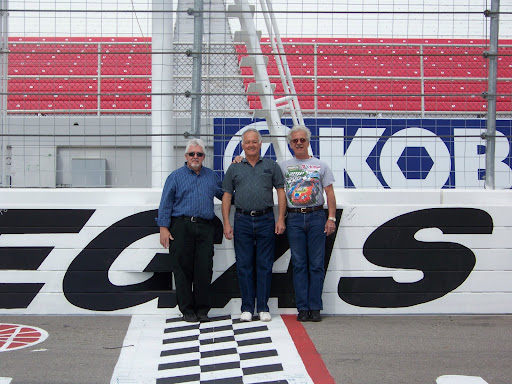John A Lightner
age ~84
from Moncks Corner, SC
- Also known as:
-
- John E Lightner
- John W Lightner
- Phone and address:
-
137 Rice Hope Dr, Moncks Corner, SC 29461
8438993035
John Lightner Phones & Addresses
- 137 Rice Hope Dr, Moncks Corner, SC 29461 • 8438993035
- Charleston, SC
- Barberton, OH
Us Patents
-
Method For Predicting Tire Performance On Rain Groove Roadways
view source -
US Patent:61551104, Dec 5, 2000
-
Filed:Apr 24, 1997
-
Appl. No.:8/847449
-
Inventors:John G. Lightner - Hartville OH
Larry L. Schlabaugh - Cuyahoga Falls OH
David C. Christy - Akron OH
Karl J. Neimes - Brecksville OH
Martin A. Yurjevich - North Canton OH
John D. Clothiaux - Hudson OH -
Assignee:Bridgestone/Firestone, Inc. - Akron OH
-
International Classification:G01M 1500
G01M 1702 -
US Classification:73146
-
Abstract:A method of testing a tire for rain groove wander is provided which allows a tire to be objectively tested in a laboratory wherein the objective test results closely correlate with subjective field analysis type data, thereby allowing for the subjective tire performance to be predicted while precluding the need for subjective field analysis of the particular tire. The method also allows objective testing of a single tire size by varying the radial loading in the laboratory test set, thereby precluding the construction of multiple tire sizes each having the same tread design. The method simulates rain groove road conditions and correlates objective analysis data obtained via the laboratory test methodology with subjective field analysis data of rain groove wander tire performance of other tires, thereby providing a substantially accurate technique for identifying the subjective performance of the tire without having to conduct the field testing to obtain such subjective field analysis data. The method substantially reduces the cost required is to design and test a prototype tire design and the time required to implement tire design testing.
-
Method And Apparatus For Measuring Irregular Tread Wear
view source -
US Patent:52494608, Oct 5, 1993
-
Filed:Dec 16, 1991
-
Appl. No.:7/807691
-
Inventors:Arthur J. Dory - Akron OH
Stephen M. Vossberg - Uniontown OH
John G. Lightner - Hartville OH -
Assignee:Bridgestone Corporation - Tokyo
-
International Classification:B60C 1100
G01M 1702 -
US Classification:73146
-
Abstract:An apparatus and technique for measuring and analyzing the tread wear of a pneumatic tire. The tire is indexed about its axis. Between the indexing steps, a laser scanner obtains data from the tread surface. This data is normalized to eliminate any out-of-roundness of the tire data. Noise spikes are removed and replaced with values attributable to valid data. From the data, a reference curve corresponding to a lateral sector of the tire is devised. The data from actual lateral sectors is then compared to the reference curve by a curve-fitting process and the deviation between the actual data and the reference curve establishes the degree of irregular wear of the tire at that lateral point.
Name / Title
Company / Classification
Phones & Addresses
SUNFALL HEIFERS, LLC
Resumes

John Lightner
view source
John Lightner
view source
Christian
view sourceWork:
Christian

John Lightner
view source
John Lightner
view sourceSkills:
Customer Service
Youtube
Googleplus

John Lightner
Work:
IComputer - Computer Technician (2012)
Tagline:
I was. I am. I will be.

John Lightner

John Lightner

John Lightner

John Lightner

John Lightner
Work:
Bridgestone - Section Manager (1981)

John Lightner
Flickr

John Lightner
view source
John Lightner
view source
John Lightner
view source
John Lightner
view source
John Lightner
view source
John Lightner
view source
John Lightner
view source
John Lightner
view sourceMyspace
Classmates

John Lightner
view sourceSchools:
Ripley-Union-Lewis High School Ripley OH 1976-1980
Community:
Lawrence Wucher, Darryl Planck

John Lightner
view sourceSchools:
Saint Stephen School Niles OH 1946-1950
Community:
Brian Gustovich, Jody Morris, John Mcnamara, John Gresley

John Lightner
view sourceSchools:
Kickapoo High School Springfield MO 1971-1975
Community:
Sandy Lehmberg, Mark Leverenz, Allyson Deshazo, Pat Spindler

St. James School, Arlingt...
view sourceGraduates:
John Slezak (1964-1968),
Brian Daley (1970-1974),
Donald Goedke (1954-1957),
John Lightner (1957-1961)
Brian Daley (1970-1974),
Donald Goedke (1954-1957),
John Lightner (1957-1961)

Kenton High School, Kento...
view sourceGraduates:
John Lightner (1953-1957),
Adam Totten (1994-1998),
Lori Rainsburg (1998-2002),
Kathy Manns (1972-1976),
Deborah Oconner (1984-1988)
Adam Totten (1994-1998),
Lori Rainsburg (1998-2002),
Kathy Manns (1972-1976),
Deborah Oconner (1984-1988)

Springfield High School, ...
view sourceGraduates:
John Lightner (1982-1986),
Paul Lorenzen (1967-1971),
Sandra Weatherbee (1956-1960)
Paul Lorenzen (1967-1971),
Sandra Weatherbee (1956-1960)

Ripley-Union-Lewis High S...
view sourceGraduates:
John Lightner (1976-1980),
Dale Spires (1954-1958),
Christa Shelton (1983-1987),
Sherrie Fowler (1991-1995),
Gerald Dickens (2006-2010)
Dale Spires (1954-1958),
Christa Shelton (1983-1987),
Sherrie Fowler (1991-1995),
Gerald Dickens (2006-2010)
Get Report for John A Lightner from Moncks Corner, SC, age ~84













